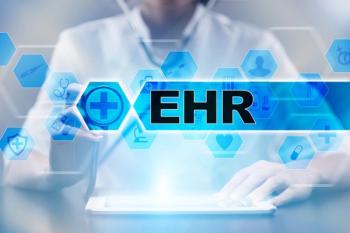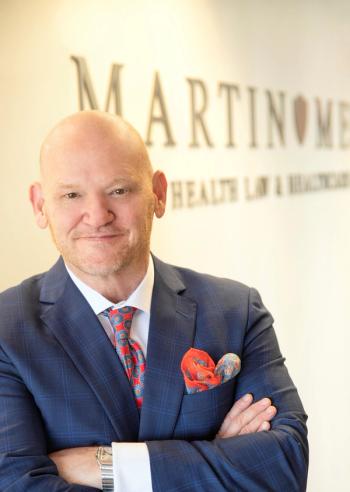
Meaningful Use Stage 1 Crib Sheet
Here's some simple guidance on how to comply with the Stage One initiatives of CMS' meaningful use initiatives and achieve meaningful use of your EHR.
You may have seen our other
With the beginning of meaningful use attestation on April 18, practices will have to prove to CMS that they have followed guidelines to receive incentive checks for their hard work.
To supplement what CMS is saying, we asked Rosemarie Nelson, a MGMA healthcare consultant who works with practices and guides them on everything from EHR selection to complying with meaningful use, for additional, simple guidance on how to comply with the Stage One meaningful use core initiatives. For more information from CMS, just click on the link for each measure.
If you are looking for how to teach meaningful use to your staff, be sure to see Rosemarie Nelson's
[We also have a companion crib sheet for Stage 2 rules released in August 2012.]
1.
In Summary What CMS Says What It Means
In Summary
Use CPOE for medication orders directly entered by any licensed healthcare professional who can enter orders into the medical record per state, local, and professional guidelines.
What CMS Says
For attestation, practices need to do this for 30 percent or more of all unique patients with at least one medication in their medication list.
What It Means
The easiest way to comply with this measure is to collect information and enter at least 30 percent of patients' medications during the intake process. Says Nelson: "Make sure you ask your vendor ‘how are you going to track this for me?' How are you going to make sure I'm doing this for at least 30 percent of patients?'" Make sure to also ask if the vendor will provide a summary dashboard by provider with total unique patients with at least one medication, and the number of those with one medication ordered via CPOE, so that percentage may be easily calculated.
2.
In Summary What CMS Says What It Means
In Summary
Implement drug-drug and drug-allergy interaction checks.
What CMS Says
Eligible professionals (EPs) must attest YES to having enabled drug-drug and drug-allergy interaction checks for the length of the reporting period to meet this measure. There are no exclusions.
What It Means
Instant information of patient allergies. Let's say your patient is allergic to sulfur-based medication. By using your EHR, any time a prescription for a medication with sulfurs is logged in, an alert pops up. The only caveat: You have to make sure that your EHR provides this feature, and that the pop-up check is turned on. "In the old days vendors got smart and allowed for these pop-ups to be turned off," says Nelson. But if you have it turned off, you could miss the meaningful use minimums, says Nelson, adding that 50 out of the 70 physician or NPs providers she worked with a few months ago had the interaction check turned off.
3.
In Summary What CMS Says What It Means
In Summary
Maintain an up-to-date problem list of current and active diagnoses.
What CMS Says
More than 80 percent of all unique patients seen by the EP must have at least one entry or an indication that no problems are known for the patient recorded as structured data.
What It Means
Certainly every practice maintains a problem list, but getting this started in a structured EHR may be more of a data entry challenge, says Nelson. One option may be to extract the diagnoses from the billing system and upload those into the EHR to save data entry time. It may mean that some old diagnoses will need to be inactivated, but that may be quicker and easier than entering structured problems manually.
4.
In Summary What CMS Says What It Means
In Summary
Generate and transmit permissible prescriptions electronically.
What CMS Says
More than 40 percent of all permissible prescriptions written by the EP are transmitted electronically using certified EHR technology. Exclusion: Any EP who writes fewer than 100 prescriptions during the EHR reporting period.
What It Means
The best thing a practice can do to comply is be consistent and send all its prescriptions electronically. "If I only submit two of them electronically, I'm not meeting that objective," says Nelson. Also, keep in mind that this is something that can only be done by the doctor or nurse (not just any staff member).
5.
In Summary What CMS Says What It Means
In Summary
Maintain an active medication list.
What CMS Says
More than 80 percent of patients seen by the provider must have at least one medication entry (or an indication that the patient is not currently prescribed any medication) recorded as structured data.
What It Means
The idea is that if a physician needs to write a prescription for one of those medications, she doesn't have to spend a lot of time searching for it. The intake nurse should also be asking the patient, "what medications are you currently on?" and putting that information into the EHR, says Nelson.
6.
In Summary What CMS Says What It Means
In Summary
Maintain an active medication allergy list.
What CMS Says
More than 80 percent of all unique patients seen by the provider must have at least one medication entry (or an indication that the patient has no known allergies) recorded as structured data. CMS defines a "unique patient" as one who is seen one or more times during the EHR reporting period.
What It Means
If the patient is allergic to anything, it needs to be recorded. A practice should make sure the drop-down menu for this question includes "no known allergies," not any confusing abbreviations. "If you look at a lot of paper records, you'll see something that says NKA for ‘no known allergy,'" says Nelson. "But that's not safe, because not everyone knows that's no known allergy."
In Summary What CMS Says What It Means
In Summary
Record all of the following demographics: preferred language, gender, race, ethnicity, date of birth.
What CMS Says
More than 50 percent of all unique patients seen by the EP need to have demographics recorded as structured data.
What It Means
Practices need to check for all five criteria for one patient -- if you miss one of these, you miss the whole thing, says Nelson. Not so long ago, few systems tracked preferred language, race and ethnicity. If a practice is using an older model EHR, the user can make a user-defined field "race" or "language" but they have to make sure they're reporting for that. Front-desk staff or NPs can save time by gathering this information through the use of check-in media tablets or online, before an appointment. "I have lots of clients who use Phreesia, an orange tablet for patients registering because it can take in meaningful use data," says Nelson.
In Summary What CMS Says What It Means
In Summary
Record and chart changes in the following vital signs: height, weight, blood pressure; calculate and display body mass index (BMI); and plot and display growth charts for children 2 to 20 years of age, including BMI.
What CMS Says
For more than 50 percent of all unique patients age 2 and over seen by the EP, height, weight, and blood pressure are recorded as structured data.
What It Means
Though it's easy to do this for all your patients, the freedom to only have to record all of these vital signs for just half of your patients allows for those patients who don't want to be weighed and measured, says Nelson.
9.
In Summary What CMS Says What It Means
In Summary
Record smoking status for patients 13 years or older.
What CMS Says
More than 50 percent of all unique patients 13 years old or older seen by the EP must have smoking status recorded.
What It Means
In theory, this is as easy as interviewing patients during intake – you don't have to worry about focusing on smoking cessation just yet. But keep in mind teenagers aren't always honest about their bad habits. "From the provider standpoint, you should be savvy enough to look at their nails, smell their clothes," and notice other signs that could indicate a cigarette habit, says Nelson.
10.
In Summary What CMS Says What It Means
In Summary
Report ambulatory clinical quality measures to CMS.
What CMS Says
Successfully report to CMS ambulatory clinical quality measures selected by CMS in the manner specified by CMS. The provider is permitted, but not required, to limit the measure of this objective to those patients whose records are maintained using certified EHR technology.
What It Means
"Be smart and build a rule based on the quality measures you have to report," says Nelson. They are: (1) Blood Pressure Measurement; (2) Preventive Care and Screening Measure Pair: Tobacco Use Assessment/Tobacco Cessation Intervention; or (3) Adult Weight Screening and Follow-up. Or, opt for the alternate quality measures.
Click here
for the lists of core and alternate quality measures, as well as the NFQ Measure Number and PQRI Implementation number.
11.
In Summary What CMS Says What It Means
In Summary
Implement one clinical decision support rule relevant to specialty or high clinical priority along with the ability to track compliance with the rule.
What CMS Says
Eligible professionals must attest YES to having implemented one clinical decision support rule for the length of the reporting period to meet the measure. Clinical Decision Support is defined by CMS as "HIT functionality that builds upon the foundation of an EHR to provide persons involved in care processes with general and person-specific information, intelligently filtered and organized, at appropriate times, to enhance health and health care."
What It Means
If you've got one specialty or high priority patient, such as a diabetic, your practice would create an alert in the EHR that would tell you if that patient has had a foot exam in the last six months. The idea is that the practice can start focusing on improving a PQRI quality measure. "The idea here is you have a lot of flexibility," says Nelson, adding that practices should make sure their EHR supports this functionality.
12.
In Summary What CMS Says What It Means
In Summary
Provide patients with an electronic copy of their health information (including diagnostic test results, problem list, medication lists, and medication allergies) upon request.
What CMS Says
To achieve meaningful use, provide an electronic copy of health records within three business days to more than 50 percent of all patients who request an electronic copy.
What It Means
Don't stress about having to do this for all patients – only half or more of those who ask. And if nobody asks, that's fine too (CMS's exclusion is any EP that has no requests from patients or their agents for an electronic patient health information record during the EHR reporting period). Nelson suggests asking your vendor if it provides for the capture of information to fulfill the patient request, or a summary dashboard by provider of all patients who request electronic copy and the percentage generated by the system within three business days.
13.
In Summary What CMS Says What It Means
In Summary
Provide clinical summaries for patients in each office visit.
What CMS Says
To achieve meaningful use, provide clinical summaries to patients for more than 50 percent of office visits within three business days. Exclusion: Any EP who has no office visits during the period of EHR reporting.
What It Means
The idea with this measure is to get the patient engaged in their health, to know if their blood pressure rises, or if they've gained a few pounds. One way a practice can comply is to create a secure Web portal for patients to access their personal health information, and notifying patients after their visits that their health information is available via the portal.
In Summary What CMS Says What It Means
In Summary
Capability to exchange key clinical information (for example, problem list, medication list, medication allergies, and diagnostic test results) among providers of care and patient authorized entities electronically.
What CMS Says
Perform at least one test of certified EHR technology's capability to electronically exchange key clinical information.
What It Means
"This could be something you exchange between systems," says Nelson. "You just have to prove you can send it to another referring provider." For Stage 1, you just have to test it once. But be warned: To comply with Stage 2 meaningful use measures, you might have to share information on a more frequent basis.
15.
In Summary What CMS Says What It Means
In Summary
Protect electronic health information created or maintained by the certified EHR technology through the implementation of appropriate technical capabilities.
What CMS Says
Conduct or review a security risk analysis in accordance with the requirements under 45 CFR 164.308(a)(1) and implement security updates as necessary and correct identified securities deficiencies as part of a risk-management process.
What It Means
Skip the vendor call: This is all on the practice to ensure there are policies and procedures around the use of electronic information. "Every practice has to conduct a security risk analysis to be in line with HIPAA laws," says Nelson. One easy way to do this is to call a consultant (consultants may be engaged to provide the security assessment within your practice). Or use a tool kit (Such as
this one
, for $999).
Marisa Torrieri is an associate editor for Physicians Practice. She can be reached at
Newsletter
Optimize your practice with the Physicians Practice newsletter, offering management pearls, leadership tips, and business strategies tailored for practice administrators and physicians of any specialty.









